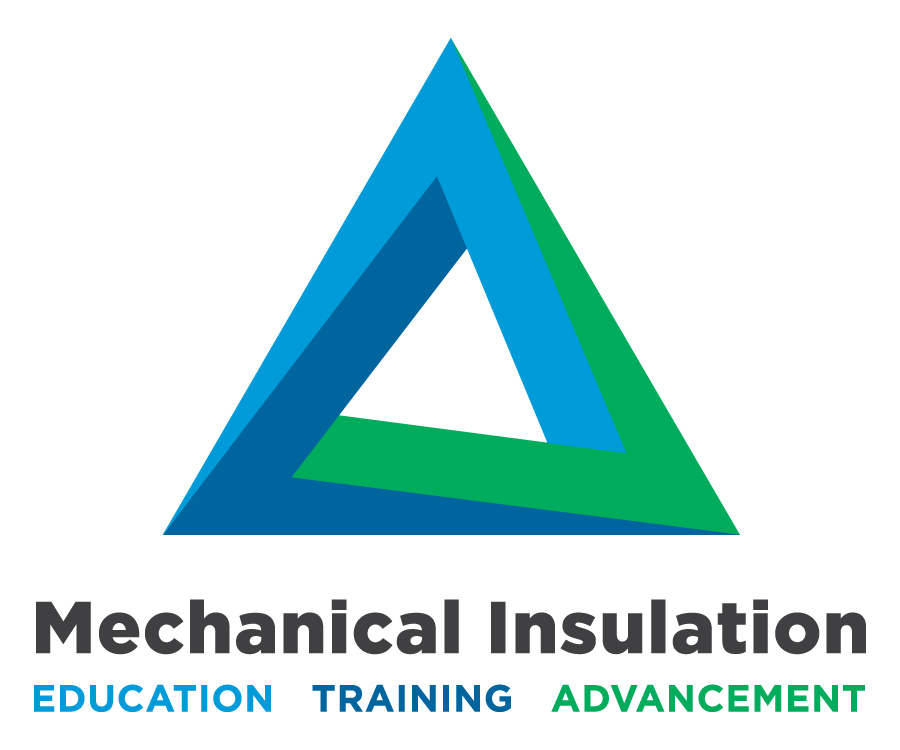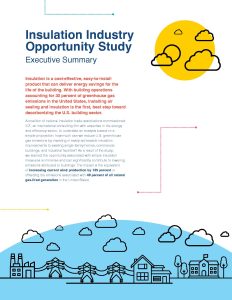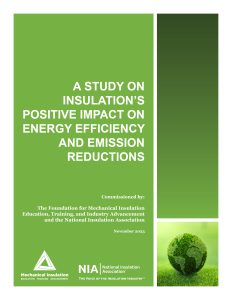
A Study on Insulation’s Positive Impact on Energy Efficiency & Emission Reductions
The Foundation for Mechanical Insulation Education, Training, and Industry Advancement and National Insulation Association (NIA) commissioned—for the first time in the history of the mechanical insulation industry—a study to determine the impact mechanical insulation systems can have on reducing the demand for energy and greenhouse gas emissions. This analysis of high-service temperature ranges (150°F–800°F) examines and interprets an 11-year window of information. This webinar includes a comprehensive overview of the study results and an explanation of how these facts can help you and your customers understand the importance of mechanical insulation, and its practical application, in rapidly achieving decarbonization goals for companies, states, and our country.
- Watch the presentation of A Study on Insulation’s Positive Impact on Energy Efficiency & Emission Reductions
- View the results infographic here.
- Read the press release here.
- Read the Executive Summary here.
- Read the article from the November 2023 issue of Insulation Outlook magazine.
- Read the full Energy and Emissions Study here.
- Download the presentation slides from NIA's Fall Summit — To request a presentation of this research, email research@insulation.org.
For questions about this study or requests for interviews and articles, email research@insulation.org.
Webinar Description:
A Study on Insulation’s Positive Impact on Energy Efficiency and Emission Reductions (Emissions Study) revealed groundbreaking data that showcases mechanical insulation as a technology that should be implemented first when beginning energy saving and emissions reductions plans.
The study's objective was to answer two questions:
-
- How much energy is saved, and GHG emissions reduced, over time by the use of mechanical insulation systems in the higher operating service temperatures in the commercial/building and industrial market segments?
- Conversely, how much is at risk or lost due to under-insulated areas in the higher temperature market segments?
During this webinar you will learn how this study proves the massive role that insulation can play in our country and global goals to save energy and reduce emissions.
Speaker:
Ron King, NIA Consultant and Past President
Based in Houston, Texas, and a 50-year veteran of the commercial and industrial insulation industry, Ron King held executive management positions with a national distributor/fabricator, an accessory manufacturer, and a specialty insulation contractor. He was awarded NIA’s President’s Award in 1986 and again in 2001. Ron King is a Past President, Honorary Member, and Consultant for NIA.
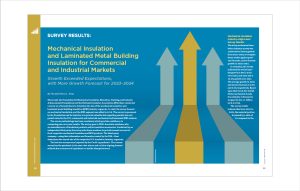
Industry Measurement Survey
Industry Measurement Report
Since 1997, the Foundation for Mechanical Insulation Education, Training, and Industry Advancement (Foundation) and the National Insulation Association (NIA) have conducted a survey on a biennial basis to determine the size of the mechanical insulation and laminated metal building insulation (MBI) industry segments. In 1997, the survey focused on mechanical insulation, and the MBI segment was added in 2013. The survey is sponsored by the Foundation and its objective is to provide valuable data regarding market size and growth rates for the U.S. commercial and industrial mechanical and laminated MBI markets.
The survey methodology has been consistent, which provides confidence in comparing year‑over‑year results. The survey goes to NIA’s Associate members, who are manufacturers of insulation products and/or insulation accessories. Conducted by an independent third party, the survey asks those members to provide annual revenue for their respective mechanical insulation and MBI products. The third-party company—using that information and formulas created by the NIA—then determines the annual size of the respective U.S. insulation industry segments.
Click here to read about the most current survey results.
To review survey results from previous Industry Measurement Reports, please click here.
ICF Insulation Industry Opportunity Study
The Foundation recently funded a study to determine how the U.S. can reduce greenhouse gas emissions by investing in easily achievable insulation improvements to existing single-family homes, commercial buildings, and industrial facilities.
ICF, an international consulting firm with expertise in the energy and energy efficiency sector, undertook the analysis. An Executive Summary follows. Click here to access the final report.
Executive Summary: Insulation is a cost-effective, easy to install product that delivers energy savings for the life of the building. With building operations accounting for approximately 30 percent of annual greenhouse gas emissions in the United States, installing air sealing and insulation products is the first, best step toward decarbonizing our built environment.
A coalition of national insulation trade associations commissioned ICF, an international consulting firm with expertise in the energy and energy efficiency sector, to undertake an analysis based on a simple proposition: how much can we reduce U.S greenhouse gas emissions by investing in easily achievable insulation improvements to existing single-family homes, commercial buildings, and industrial facilities. As a result of the study, we learned the opportunity associated with simple insulation measures is immense and can significantly contribute to lowering emissions attributed to buildings. The impact is the equivalent of increasing current wind production by 135 percent or offsetting the emissions associated with forty percent of all natural gas-fired generation in the United States.
Key Findings
Residential Buildings
- Large savings potential for existing homes. ICF estimates that energy savings ranging from 10 to 45 percent can be achieved in existing homes that are air sealed and have insulation added in the ceiling and floors (and walls in very limited circumstances) to levels prescribed by the 2021 International Energy Conservation Code.
- Expected long-term carbon reductions. Nationally, this retrofit activity could yield roughly 10 billion tons of carbon emissions over a fifty-year period – the minimum useful life of building insulation.
Commercial Buildings
- Savings seen in all commercial building types. ICF analyzed a range of commercial buildings, including schools, small to midsize office buildings, midrise apartments, and stand-alone retail, applying customary ASHRAE 90.1-2019-compliant roof insulation upgrades and pipe insulation improvement While savings vary by building type, the national average for whole building energy savings is approximately 5 percent, with nearly 70 percent of those savings resulting from decreased natural gas usage, which would also reduce GHG emissions.
- Significant opportunity in education subsector. Nationally, primary schools would reduce annual energy use by an average of nearly 9 percent by incorporating these insulation improvements, while secondary schools would average energy savings of more than 7 percent.
Industrial Facilities
- Exceptionally short payback periods. ICF found that making pipe and mechanical insulation improvements to industrial facilities in eight major industrial sectors (i.e., chemical, food, paper, plastic, etc.) would save the industrial sector more than $126 billion in energy costs based on an average capital cost of $3.77 billion. The average payback on this investment is only about one year. For many industrial sectors, the payback is as little as six months. This energy reduction translates into carbon emissions prevented.
- Insulation aids in transition to electrification. Energy savings from insulation upgrades can reduce natural gas use by 118 billion therms across the U.S. industrial sector and help reduce demand on the electric grid as electrification technologies roll out.
Conclusion
Making common sense insulation improvements to buildings, facilities, and plants yields enormous energy cost savings to consumers and drives tremendous greenhouse gas emission reductions. The emission reduction potential resulting from buildings, facilities, and plants considered in this study would drive annual CO2 equivalent emission reductions of nearly 282 million tons and lifetime CO2E emission reductions of more than 11.5 billion tons. Perhaps most importantly, insulation improvements can be implemented immediately with off-the-shelf technology, while allowing longer-term investments and electrification technologies to be planned and deployed.
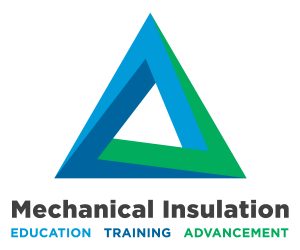
MI Energy & Carbon Reduction Impact Study
MI Energy & Carbon Reduction Impact Study
The Mechanical Insulation Industry has long talked about the impact mechanical insulation can have on energy savings and the reduction of carbon emissions. Given the current focus on both of those topics our industry has never been in a better position to demonstrate this environmental impact.
Currently many governmental agencies, engineering firms, and facility owners are evaluating a host of initiatives to reduce their carbon footprint while reducing energy demands. Information is needed related to the past, present, and future impact mechanical insulation can deliver in response to sustainability efforts.
The Foundation has developed a methodology to determine estimates of the total energy savings and emission reduction on higher service temperature ranges (150F – 1,200F).
The objective is to determine the energy savings and carbon reduction impact of mechanical insulation based upon:
(1) current mechanical insulation usage levels,
(2) past usage (5- & 10-year estimate);
(3) estimated impact for the next 5-10 years and
(4) estimated missing and/or damaged insulation for the past 5 - 10 years and forecast of the next 5-10 years.
This survey will be conducted in Q3 2022 by a third party, Industry Insights, and results and analysis will be available in Q4.
Click here to access the final report.
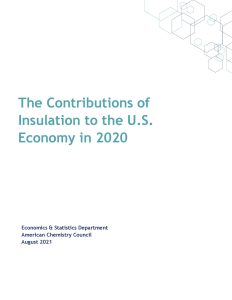
Contributions of Insulation to the U.S. Economy
Contributions of Insulation to the U.S. Economy
The Foundation contributed information to the commercial, industrial, and mechanical segments of the updated American Chemistry Council Insulation Industry Report, Contributions of Insulation to the U.S. Economy in 2020, published by the Economic and Statistics Department of the American Chemistry Council.
Click here to access the final report.
